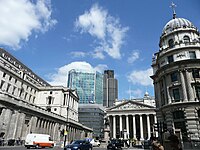London Interbank Offered Rate

London interbank offered rate, or LIBOR, is like a special kind of thermometer that measures how warm or cold the temperature is in the money market. Just like how we use thermometers to check how hot or cold the weather is, bankers use LIBOR to check how much it costs for them to borrow money from other banks.
LIBOR is used as a benchmark or a reference point for many types of loans such as car loans, student loans, mortgages, and credit cards. It helps lenders determine the interest rate they should charge borrowers.
Think of it like this: when you ask your parents for an allowance or a loan, they might ask you what your cousin or friend gets for their allowance or loan to decide how much to give you. This is what banks do with LIBOR. They look at what other banks are charging to borrow money, then use that information to set interest rates for different types of loans.
But it’s important to remember that LIBOR is not controlled by one person or one bank. Instead, it’s calculated based on the average interest rates submitted by a group of big banks in London, which is why it’s called the "interbank" offered rate. These banks basically share information with each other and come up with an average interest rate that they would charge for lending money to each other. This average interest rate then becomes the LIBOR.
Overall, LIBOR helps us understand how much it costs for banks to borrow money from each other, and this information is used to set the interest rates for many types of loans.
LIBOR is used as a benchmark or a reference point for many types of loans such as car loans, student loans, mortgages, and credit cards. It helps lenders determine the interest rate they should charge borrowers.
Think of it like this: when you ask your parents for an allowance or a loan, they might ask you what your cousin or friend gets for their allowance or loan to decide how much to give you. This is what banks do with LIBOR. They look at what other banks are charging to borrow money, then use that information to set interest rates for different types of loans.
But it’s important to remember that LIBOR is not controlled by one person or one bank. Instead, it’s calculated based on the average interest rates submitted by a group of big banks in London, which is why it’s called the "interbank" offered rate. These banks basically share information with each other and come up with an average interest rate that they would charge for lending money to each other. This average interest rate then becomes the LIBOR.
Overall, LIBOR helps us understand how much it costs for banks to borrow money from each other, and this information is used to set the interest rates for many types of loans.
Related topics others have asked about:
